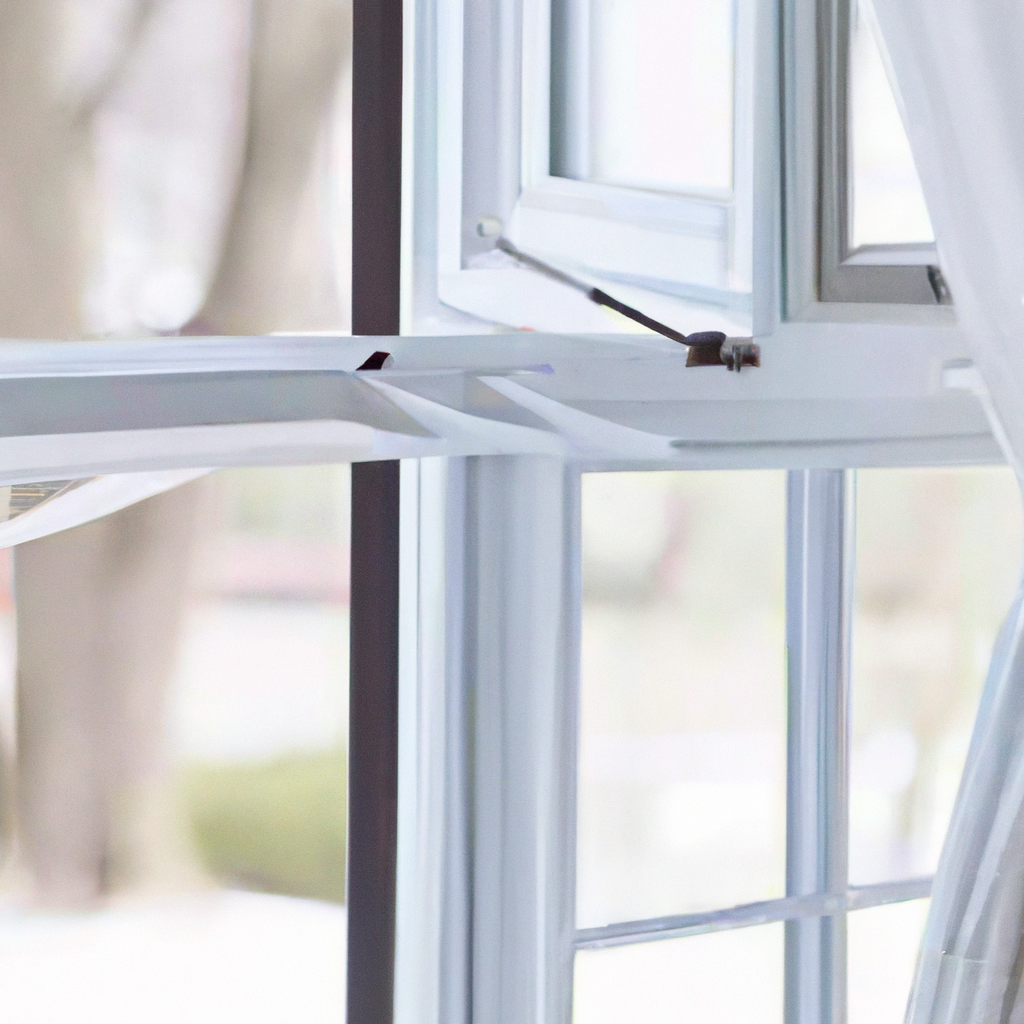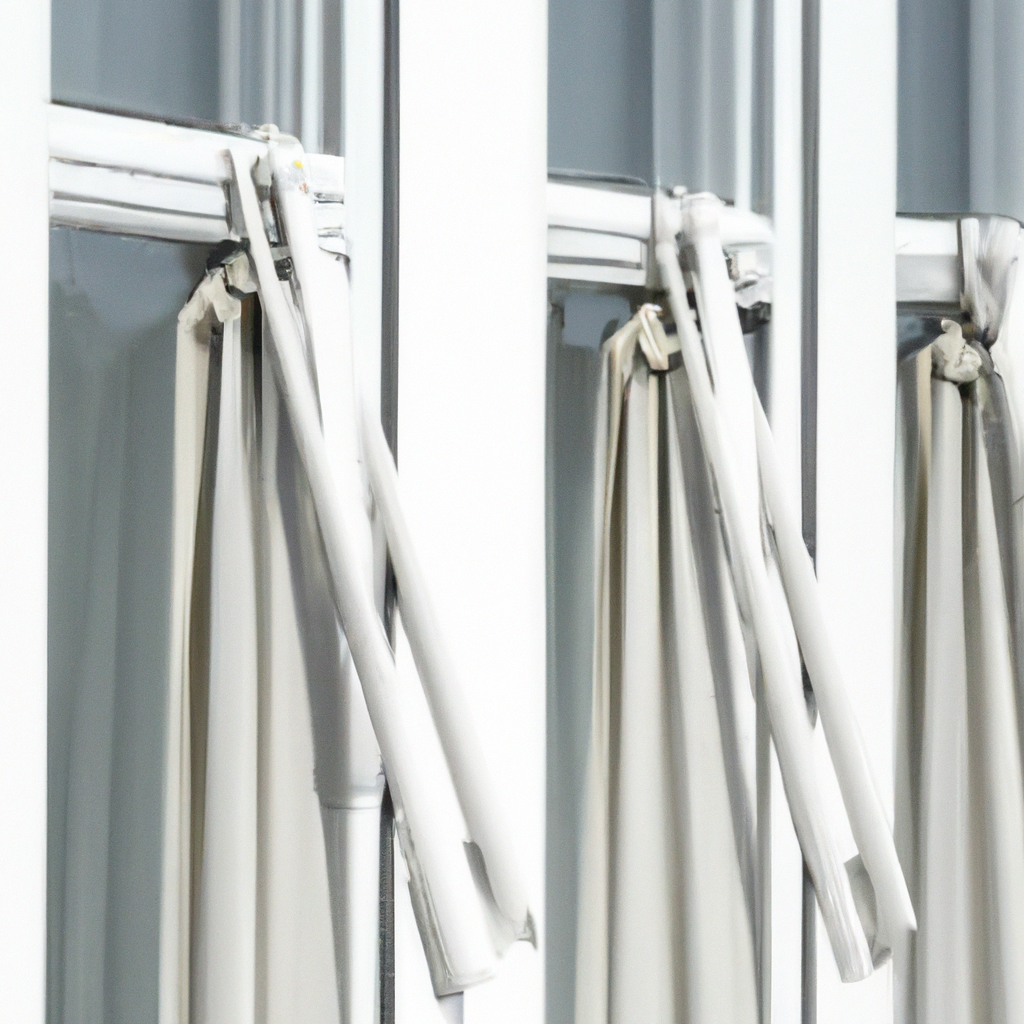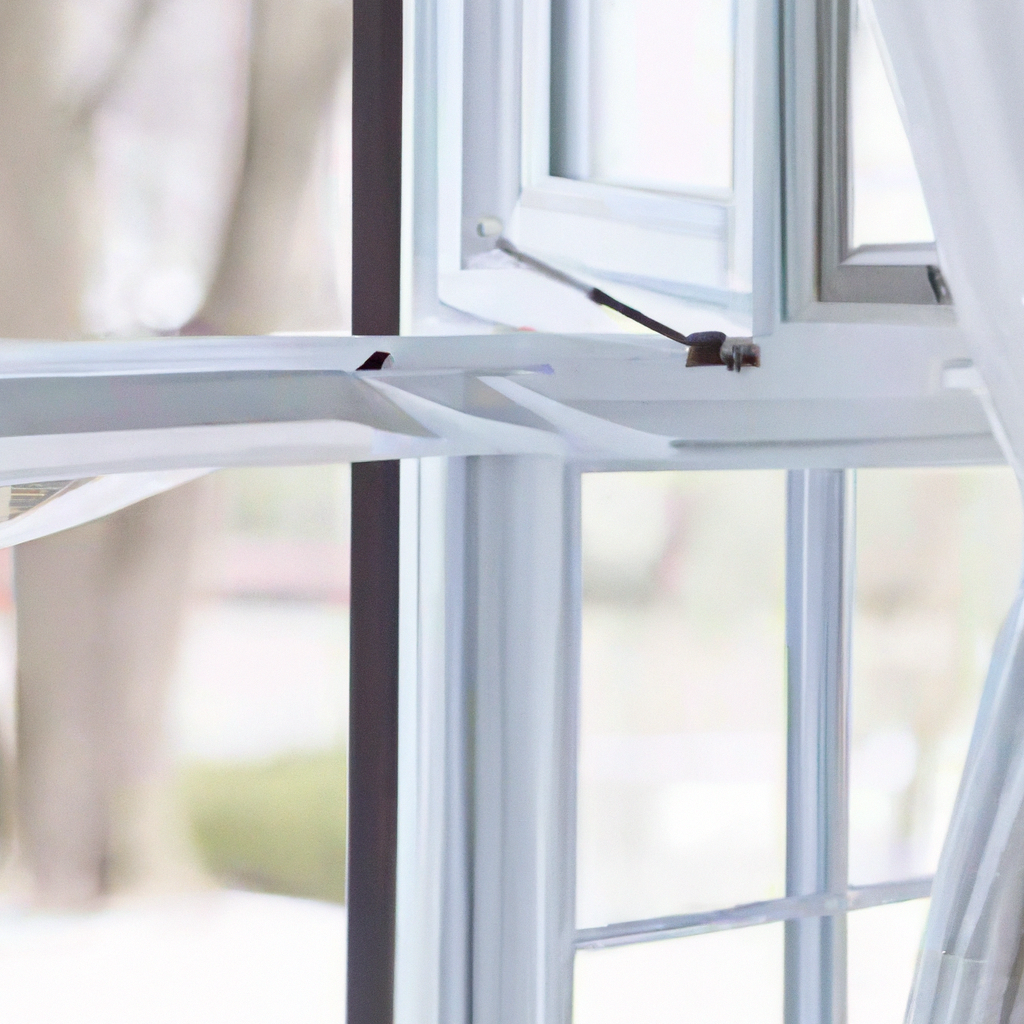When it comes to protecting your home from the elements, impact windows and doors are a smart choice. Not only do they provide added security against intruders, but they are also designed to withstand extreme weather conditions. However, to ensure maximum energy efficiency and keep your home well-insulated, the right kind of weather stripping is essential. From adhesive strips to compression seals, there are various options available that effectively seal gaps and prevent air leakage. In this article, we will explore the different types of weather stripping commonly used for impact windows and doors, helping you make an informed decision for your home.
Understanding Impact Windows and Doors
Definition of impact windows and doors
Impact windows and doors are specially designed windows and doors that are built to withstand powerful forces, such as hurricanes, high winds, and flying debris. These windows and doors are constructed using impact-resistant glass and strong frames, which help protect homes and buildings from potential damage during severe weather events. Unlike regular windows and doors, impact windows and doors are engineered to meet strict building codes and regulations in areas prone to hurricanes and strong storms.
Benefits of impact windows and doors
The installation of impact windows and doors offers numerous benefits for homeowners. Firstly, they provide increased protection against extreme weather conditions, including hurricanes, tornadoes, and severe storms. The impact-resistant glass used in these windows and doors is designed to stay intact even if it is struck by debris or extreme forces, preventing dangerous shards of glass from flying into your home.
Secondly, impact windows and doors offer enhanced security. The strength and durability of these windows make them incredibly difficult to break into, providing homeowners with peace of mind and an added layer of protection against potential intruders.
Furthermore, impact windows and doors also offer sound insulation properties, helping to reduce outside noise pollution and keeping the interior of your home quieter and more peaceful. Additionally, these windows and doors may contribute to energy efficiency by providing better insulation, helping to keep your home cooler in the summer and warmer in the winter, thus reducing your energy consumption and utility bills.
Overall, impact windows and doors are a wise investment that not only protects your home from external threats but also offers various other advantages, including improved security, increased energy efficiency, and reduced noise pollution.
Importance of Weather Stripping
What is weather stripping?
Weather stripping refers to the process of sealing gaps and leaks around doors and windows to prevent the infiltration of air, water, pests, and dust. It involves adding a material, usually made of rubber, foam, or adhesive tapes, to the edges of doors and windows to create a tight seal when they are closed. Weather stripping plays a crucial role in maintaining the energy efficiency and structural integrity of your home.
Why is weather stripping important for impact windows and doors?
Weather stripping is particularly important for impact windows and doors as it helps to enhance their performance and effectiveness in terms of both weather resistance and energy efficiency. Since impact windows and doors are specifically designed to withstand high winds and flying debris, a proper seal is essential to ensure their optimal functioning and to prevent air and water infiltration during severe weather conditions.
By sealing any gaps or cracks, weather stripping helps to create an airtight seal between the windows or doors and their frames, reducing the risk of water leaks, drafts, and energy loss. This ensures that your impact windows and doors continue to provide reliable protection against extreme weather, while also helping to maintain a comfortable indoor environment.
Moreover, weather stripping also helps to preserve the lifespan of your impact windows and doors by preventing moisture buildup and subsequent damage. It helps to minimize the risk of rotting, warping, and deterioration, which can occur when water seeps into gaps and cracks.
In summary, weather stripping is crucial for impact windows and doors as it ensures their proper functioning, energy efficiency, and longevity, while also providing additional protection against water infiltration and structural damage.

Types of Weather Stripping for Impact Windows and Doors
1. Compression seals
Compression seals, also known as bulb seals or compression gaskets, are a common type of weather stripping used for impact windows and doors. They consist of a flexible material, such as rubber or silicone, that is compressed between the window or door frame and the sash or panel when closed. This creates an airtight seal that helps to prevent air and water infiltration, while also providing some insulation and soundproofing benefits.
2. V-strip seals
V-strip seals, also called tension seals or V-channel weather stripping, are another popular option for weather stripping impact windows and doors. These seals consist of a strip of flexible material, usually made of vinyl or metal, shaped like a V. The strip is inserted into a groove or track on the window or door frame, creating a barrier that blocks air and water from entering. V-strip seals are relatively easy to install and provide effective weatherproofing properties.
3. Adhesive-backed foam tapes
Adhesive-backed foam tapes are a versatile and affordable option for weather stripping impact windows and doors. These tapes consist of a foam strip with adhesive backing, which can be attached directly to the window or door frame. The foam provides a barrier against air and water infiltration and also helps to reduce noise. Adhesive-backed foam tapes are easy to install and can be cut to the desired length, making them suitable for various window and door sizes.
4. Silicone-based weather stripping
Silicone-based weather stripping offers excellent durability and flexibility, making it a popular choice for impact windows and doors. This type of weather stripping is resistant to extreme temperatures, UV rays, and moisture, making it ideal for areas with harsh weather conditions. Silicone-based weather stripping usually comes in the form of adhesive tapes or sealants, which can be applied directly to the window or door frame for a secure seal.
5. Magnetic weather stripping
Magnetic weather stripping utilizes magnetic attraction to create a strong seal between the window or door frame and the sash or panel. It consists of a magnetic strip that is embedded in the edge of the window or door, along with a corresponding magnetic strip that is affixed to the frame. When the window or door is closed, the magnets attract each other, providing an airtight and watertight seal. Magnetic weather stripping is particularly effective at sealing out drafts and preventing air and water infiltration.
6. Interlocking metal weather stripping
Interlocking metal weather stripping is a durable and long-lasting option for impact windows and doors. It typically consists of metal strips, such as aluminum or steel, that interlock together when the window or door is closed. This creates a tight seal that helps to prevent air and water penetration. Interlocking metal weather stripping is commonly used in commercial and industrial settings where high durability and security are required.
7. Brush weather stripping
Brush weather stripping, also known as bristle strips or brush seals, uses a series of flexible bristles to create a barrier against air, dust, insects, and noise. The bristles are usually made of synthetic materials, such as nylon or polypropylene, and are attached to a metal or plastic strip that is affixed to the window or door frame. Brush weather stripping is effective at sealing small gaps and irregular surfaces and is often used for sliding doors and windows.
8. Sweeps and thresholds
Sweeps and thresholds are weather stripping components that are typically used for the bottom of doors. A door sweep is a strip of rubber or vinyl that is attached to the bottom edge of the door, creating a seal against drafts and pests. A threshold, on the other hand, is a horizontal strip installed at the base of the door frame, providing a smooth transition between indoor and outdoor surfaces. Sweeps and thresholds are crucial for preventing air, water, and debris from entering through the bottom of the door.
9. Bulb seals
Bulb seals, similar to compression seals, consist of a flexible bulb-shaped material that is compressed between the sash or panel and the frame when closed. The bulb shape provides an effective seal against air and water infiltration, while also offering some insulation and soundproofing benefits. Bulb seals are commonly used for sliding windows and doors, providing a reliable weatherproofing solution.
10. Gaskets and seals
Gaskets and seals are commonly used for impact windows and doors to provide an airtight and watertight seal. They are made from various materials, such as rubber, EPDM, or neoprene, and are designed to fit into specific grooves or channels on the window or door frame. Gaskets and seals offer excellent weather resistance and insulation properties, helping to improve the energy efficiency and performance of impact windows and doors.
Factors to Consider When Choosing Weather Stripping
1. Durability
When choosing weather stripping for impact windows and doors, durability is a crucial factor to consider. The weather stripping should be able to withstand the harsh weather conditions in your area, including strong winds, heavy rain, UV rays, and temperature fluctuations. Look for weather stripping materials that are resistant to wear, tear, and deterioration, ensuring that your windows and doors remain properly sealed and protected for an extended period.
2. Resistance to weather conditions
Impact windows and doors are specifically designed to withstand severe weather conditions, and the weather stripping should complement this functionality. Ensure that the weather stripping materials are resistant to extreme temperatures, moisture, UV rays, and corrosive elements. This will help maintain the integrity of your windows and doors, preventing water infiltration, air leaks, and material degradation.
3. Soundproofing capabilities
Consider the soundproofing capabilities of the weather stripping materials if noise reduction is important to you. Certain types of weather stripping, such as brush seals or foam tapes, offer better sound insulation properties than others. If you live in a noisy neighborhood or near busy roads, choosing weather stripping with enhanced soundproofing capabilities can help create a more peaceful and comfortable indoor environment.
4. Ease of installation and maintenance
Look for weather stripping options that are easy to install and maintain. Some weather stripping materials, such as adhesive-backed foam tapes or magnetic strips, are simple to apply and require minimal tools and expertise. Consider your skill level and available resources when choosing weather stripping materials to ensure a hassle-free installation process. Additionally, choose weather stripping that is easy to clean and maintain, as regular upkeep is important for its longevity and functionality.
5. Cost-effectiveness
While it’s important to choose high-quality weather stripping materials, considering cost-effectiveness is also necessary. Evaluate the prices of different weather stripping options and compare them against their durability, performance, and lifespan. It’s worth investing in weather stripping that provides long-term benefits and savings on energy costs, rather than opting for cheap materials that may need frequent replacements or perform inadequately.

Installation Process for Weather Stripping
Preparation before installation
Before installing weather stripping on your impact windows and doors, there are a few steps you should take to ensure a successful installation process. Firstly, make sure you have all the necessary materials, including the selected weather stripping, a measuring tape, a utility knife or scissors, a screwdriver, and any additional adhesives or fasteners required. Clear the window or door area of any dirt, debris, or old weather stripping remnants, and ensure that the surfaces are clean, dry, and free from any obstructions.
Steps for installing weather stripping
- Measure the length of the window or door frame where the weather stripping will be installed. Add a few extra inches to allow for any overlapping or trimming.
- Cut the weather stripping material to the measured length using a utility knife or scissors, following the manufacturer’s instructions.
- Start applying the weather stripping material to the window or door frame, starting from one corner. Press the adhesive side firmly onto the frame, ensuring that the seal is flush and aligned.
- Continue applying the weather stripping along the entire length of the frame, pressing firmly to ensure a secure adhesion. Trim any excess material if necessary.
- Repeat the process for each side of the window or door frame, making sure to maintain a consistent and even seal.
- Once the weather stripping is installed, test the window or door by opening and closing it to ensure that the seal is tight and secure.
- Make any necessary adjustments or additions to the weather stripping to ensure optimal performance and a proper seal.
- Clean up any excess adhesive or trimmings, and allow the weather stripping to fully adhere and set according to the manufacturer’s instructions.
Remember, the installation process may vary depending on the type of weather stripping and the specific instructions provided by the manufacturer. Always refer to the product guidelines and seek professional assistance if needed.
Maintaining and Replacing Weather Stripping
Signs of worn-out weather stripping
Over time, weather stripping may wear out or become damaged due to exposure to the elements and regular use. It’s essential to inspect your weather stripping periodically and look out for signs that indicate it may need maintenance or replacement. Some common signs of worn-out weather stripping include:
- Visible cracks, tears, or deformities in the material.
- Loss of elasticity or flexibility, causing the weather stripping to shrink or separate from the frame.
- Peeling, curling, or fraying edges, indicating adhesive failure or material degradation.
- Drafts or noticeable air leaks around windows and doors, indicating a compromised seal.
- Increased noise levels, suggesting a loss of sound insulation properties.
- Difficulty in opening or closing windows and doors due to excessive friction or sticking caused by damaged weather stripping.
If you observe any of these signs, it’s important to address them promptly to prevent further damage and maintain the energy efficiency and performance of your impact windows and doors.
Tips for maintaining weather stripping
To extend the lifespan and effectiveness of your weather stripping, follow these maintenance tips:
- Regularly clean the weather stripping using mild soap or detergent and a soft brush or cloth. This will help remove any dirt, debris, or buildup that may affect its functionality.
- Inspect the weather stripping for signs of wear or damage periodically. Pay attention to areas that are exposed to direct sunlight or harsh weather conditions, as they may deteriorate faster.
- Keep the weather stripping surfaces dry and free from moisture. Excessive moisture can cause mold, mildew, and material degradation, compromising the integrity of the seal.
- Avoid using harsh chemicals, solvents, or abrasive materials when cleaning the weather stripping, as they may cause damage or erosion.
- If you notice any minor issues or gaps in the weather stripping, promptly repair them using adhesive or additional weather stripping materials. This will help maintain a tight seal and prevent water infiltration or air leaks.
Steps for replacing weather stripping
If your weather stripping is beyond repair or no longer provides an effective seal, it’s time to replace it. Follow these steps to replace weather stripping:
- Remove the old weather stripping by gently pulling it away from the frame or using a utility knife to cut through any adhesive or fasteners.
- Clean the window or door frame thoroughly, removing any remaining adhesive, dirt, or debris. Ensure that the surface is clean, dry, and smooth.
- Measure the length of the frame where the new weather stripping will be installed, taking into account any overlapping or trimming necessary.
- Cut the new weather stripping material to the measured length using a utility knife or scissors, following the manufacturer’s instructions.
- Install the new weather stripping by applying adhesive or using the appropriate fasteners as recommended by the manufacturer. Follow the installation process outlined in the manufacturer’s instructions.
- Ensure that the new weather stripping is aligned properly and provides a flush and even seal when the window or door is closed.
- Test the window or door by opening and closing it to verify that the new weather stripping provides a tight and secure seal.
Replacing weather stripping is a relatively simple task, but if you’re unsure or uncomfortable with the process, it’s always best to consult a professional for assistance.
Conclusion
Weather stripping is a vital component for maximizing the performance and efficiency of impact windows and doors. By choosing the right weather stripping materials and ensuring proper installation and maintenance, you can enhance the weather resistance, energy efficiency, and longevity of your impact windows and doors.
When selecting weather stripping, consider factors such as durability, resistance to weather conditions, soundproofing capabilities, ease of installation and maintenance, and cost-effectiveness. These considerations will help you choose the most suitable weather stripping option for your specific needs and preferences.
Remember to follow the recommended installation process and regularly inspect and maintain your weather stripping to ensure its optimal functionality. If you notice any signs of wear or damage, promptly address them by cleaning, repairing, or replacing the weather stripping as needed.
In conclusion, weather stripping is an important aspect of the overall performance and durability of impact windows and doors. By investing in high-quality weather stripping and properly maintaining it, you can enjoy the benefits of enhanced protection, energy efficiency, and comfort in your home.
